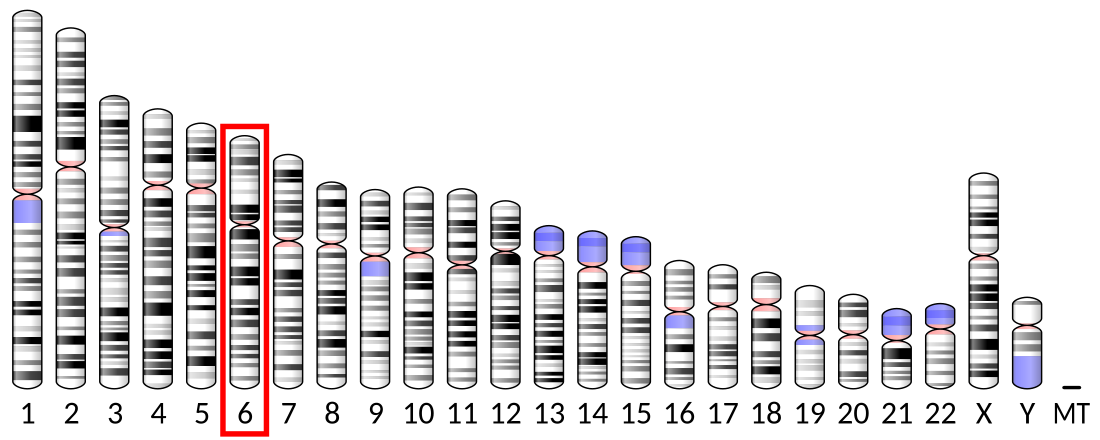Top Qs
Timeline
Chat
Perspective
LIN28B
Protein-coding gene in the species Homo sapiens From Wikipedia, the free encyclopedia
Remove ads
Lin-28 homolog B is a protein that in humans is encoded by the LIN28B gene.[5] Lin28 is a gene found in both invertebrates and vertebrates, from worms to humans, where it regulates the timing of development from fertilization to adulthood.[6][7][8]
Remove ads
Evolution
Lin28B can be traced to a mutational event that occurred around 300 million years ago during which a large section of a heterochronic gene, Lin28, now referred to as Lin28A, was duplicated resulting in the appearance of a paralog, Lin28B.[6][7][8]
Structure
The protein encoded by this gene belongs to the lin-28 family, which is characterized by the presence of a cold-shock domain and a pair of CCHC zinc finger domains.
Tissue distribution
This gene is highly expressed in testis, fetal liver, placenta, and in primary human tumors and cancer cell lines.
Function
LIN28B is an evolutionarily conserved RNA-binding protein primarily known for its role in regulating the maturation of let-7 microRNAs, which are important for cell differentiation and development. During embryogenesis and in stem cells, LIN28B blocks differentiation and promotes cell proliferation by inhibiting let-7 biogenesis, thereby preventing the accumulation of these tumor-suppressive miRNAs. Mechanistically, the N-terminal cold-shock domain (CSD) and the C-terminal zinc-knuckle domain (ZKD) of LIN28B allow for stepwise binding to immature let-7 pre-miRNAs, triggering their remodeling and subsequent uridylation and degradation, effectively silencing their functions.[9][10][11]
developmental timing, pluripotency, and tumorigenesis, chiefly by controlling miRNA biogenesis and acting as an RNA-binding protein, but it also possesses let-7–independent roles in direct gene regulation and cellular metabolism.[10]
Remove ads
Clinical significance
It is negatively regulated by microRNAs that target sites in the 3' UTR, and overexpression of this gene in primary tumors is linked to the repression of let-7 family of microRNAs and derepression of let-7 targets, which facilitates cellular transformation.
Even minor changes in Lin28 are known to alter the timing of developmental stages and thereby affect all features that emerge during those stages.[6][7] The duplication shifted the developmental clock backward, such that mammals carrying both Lin28A and Lin28B gave birth earlier in gestation.[12][13] As a result, mammalian offspring were born less developed, requiring greater maternal investment. This innovation marked the appearance of mammals and accounts for two of their distinguishing features compared to reptiles and amphibians: altricial young and increased maternal bonding.[14]
Remove ads
References
Further reading
Wikiwand - on
Seamless Wikipedia browsing. On steroids.
Remove ads




